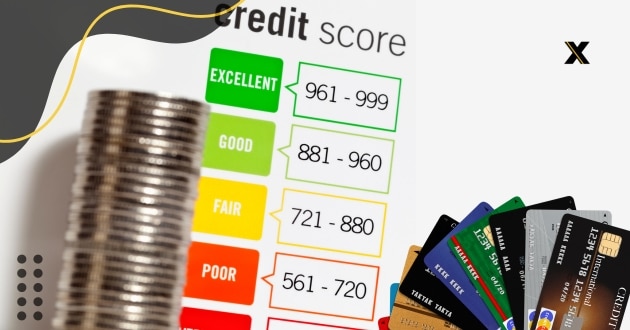Anúncios
Credit card for rebuilding bad credit is more than just a piece of plastic, it is a second chance to reshape your financial reputation. Many people who have experienced financial setbacks, such as missed loan payments, overwhelming debt, or even bankruptcy, often feel locked out of the financial system.
Yet, a simple tool like this kind of card can act as the bridge between financial hardship and long-term stability. At first glance, applying for one may feel intimidating. After all, when your credit history is far from perfect, every rejection can weigh heavily on your confidence.
However, what makes these cards powerful is that they are specifically designed for people in your situation. Unlike traditional credit cards, which demand strong credit profiles, a credit card for rebuilding bad credit recognizes that you deserve the chance to demonstrate responsibility again.
Moreover, these cards do more than just rebuild numbers on a credit report. They foster new habits, encourage disciplined spending, and provide the foundation for future opportunities. Whether you are aiming to qualify for a mortgage, secure a personal loan with better interest rates, or simply regain peace of mind, the right card can help you take the first concrete step.
Anúncios
Most importantly, rebuilding credit is not about perfection, it is about consistency. Transitioning from a history of financial struggles to a track record of reliability does not happen overnight, but with the proper tools, the journey becomes realistic and attainable.
By the time you finish this guide, you’ll see how the strategic use of a credit card for rebuilding bad credit can completely redefine your financial outlook.
Understanding Bad Credit
To begin with, understanding what bad credit means is the foundation of any rebuilding strategy. Credit scores, which usually range between 300 and 850, serve as a financial snapshot of your reliability in the eyes of lenders. When that number falls below 580, it typically signals bad credit, which makes banks and credit card issuers far more cautious.
In most cases, this situation does not arise overnight. On the contrary, it is often the result of repeated financial missteps such as missed payments, defaulted loans, high credit utilization, or even bankruptcy filings.
As a consequence, lenders see you as a risk, which directly impacts your ability to borrow money at reasonable terms. Moreover, the ripple effects go beyond loans. Renting an apartment, applying for a car lease, or even securing a job in certain industries can become significantly harder when a low score follows you.
However, it is important to highlight that bad credit is not permanent. On the contrary, it is a temporary status that can be improved with consistent effort and the right tools.
One of those tools is a credit card for rebuilding bad credit, which allows you to demonstrate new financial habits and slowly rebuild trust with creditors. By making small, regular payments and keeping balances under control, you can gradually push your score upward.
Furthermore, as you work on improving your score, you also prepare yourself for future financial opportunities. For example, once your credit health improves, you might qualify for premium cards, such as the Best credit card for travel, which often come with valuable rewards, perks, and lower interest rates. This long-term vision shows why rebuilding credit is not simply about correcting the past, it’s about opening doors to better possibilities ahead.
Why Choose a Credit Card to Rebuild?
Some people wonder: why not just avoid credit cards altogether? While it may feel safer, avoiding credit completely doesn’t rebuild your score. Credit scores are based on your credit history, so you need to show responsible usage.
By responsibly managing a credit card for rebuilding bad credit, you create a positive track record. Each on-time payment is reported to credit bureaus, slowly improving your score. Over time, this opens doors to better credit offers, lower interest rates, and broader financial opportunities.
Types of Credit Cards for Rebuilding Bad Credit
When considering your options, it’s essential to understand the two main categories available:
- Secured Credit Cards: Secured cards require a cash deposit upfront, usually equal to your credit limit. For example, if you deposit $300, your limit is $300. This deposit protects the lender, reducing their risk. Despite requiring collateral, secured cards function like regular credit cards. You can make purchases, pay bills online, and, most importantly, build credit as your activity is reported to credit bureaus. Over time, with responsible use, you may qualify for an unsecured upgrade.
- Unsecured Credit Cards for Bad Credit: Some issuers provide unsecured cards designed specifically for people with poor credit. These usually have lower limits and higher fees compared to standard cards. However, they still offer the chance to prove your reliability without tying up funds in a deposit. Both types can serve as an effective credit card for rebuilding bad credit. The choice depends on your financial situation, comfort level, and goals.
Key Features to Look For
Not every card is created equal. To maximize your chances of success, consider these essential features:
- Reporting to all major credit bureaus: This ensures your responsible usage positively impacts your score.
- Reasonable fees: Avoid cards with excessive annual fees, hidden charges, or sky-high interest rates.
- Opportunity for upgrade: Choose cards that allow a transition from secured to unsecured after consistent use.
- Mobile app access: Easy account management makes sticking to your plan much simpler.
Selecting the right credit card for rebuilding bad credit means balancing affordability with credit-building effectiveness.
The Benefits of Using a Credit Card for Rebuilding

Transitioning from poor credit to fair, or even good credit, requires patience. Still, the benefits of using one of these cards are worth the effort:
- Positive payment history: On-time payments are the strongest factor in your credit score.
- Lower credit utilization ratio: Keeping your spending below 30% of your limit signals healthy habits.
- Access to better financial products: As your score improves, you’ll qualify for better loans and cards.
- Sense of control: Having a plan restores confidence in your ability to manage money.
Ultimately, the right credit card for rebuilding bad credit is more than a temporary fix; it’s a stepping stone to a secure financial future.
Common Mistakes to Avoid
Although these cards are powerful tools, they can backfire if misused. Watch out for these common pitfalls:
- Missing payments: Even one missed payment can undo months of progress.
- Maxing out your card: High balances signal financial distress to lenders.
- Closing the account too soon: Long credit history helps boost scores, so keep accounts open when possible.
- Applying for multiple cards at once: Each application triggers a hard inquiry, which temporarily lowers your score.
Staying mindful of these mistakes ensures your credit card for rebuilding bad credit serves as an asset, not a liability.
Practical Steps for Success
Here’s how to make the most of your card:
- Start small: Use your card for everyday purchases like groceries or fuel.
- Pay in full each month: Avoid interest charges while showing responsible management.
- Set reminders: Automatic payments or calendar alerts reduce the risk of forgetting due dates.
- Monitor your credit: Track your progress monthly to stay motivated and spot errors quickly.
- Reassess after six to twelve months: Once your score improves, consider applying for better cards with rewards and lower fees.
By following these steps, you transform your credit card for rebuilding bad credit into a powerful tool for long-term recovery.
Alternatives to Credit Cards
While credit cards are effective, they’re not the only option. Consider these complementary strategies:
- Credit builder loans: Offered by some banks and credit unions, these loans are designed specifically for improving credit.
- Authorized user status: Becoming an authorized user on someone else’s good account can add positive history to your profile.
- Rent reporting services: Some platforms allow you to report monthly rent payments to credit bureaus.
Used alongside a credit card for rebuilding bad credit, these methods accelerate the path to better financial standing.
How Long Does Rebuilding Take?
One of the most common questions is: “How long until my credit improves?” The answer varies, but with consistent effort, many people see results within six months. Significant improvements, however, may take 12 to 24 months.
Remember, rebuilding is not about quick fixes, it’s about developing lifelong habits. Patience, consistency, and discipline make all the difference.
Conclusion
Rebuilding your financial life may seem overwhelming at first, yet with the right mindset and tools, it becomes entirely achievable. A credit card for rebuilding bad credit is not just a product, it is a practical pathway toward restoring your credibility with lenders, employers, and even landlords.
By consistently paying on time, maintaining low balances, and avoiding unnecessary fees, you send a clear signal that your financial behavior has changed.
Equally important, this process is not about instant fixes but about creating new habits that last a lifetime. While setbacks may occur, every positive payment and every responsible decision adds weight to your financial story.
As months go by, your improved score can qualify you for better financial opportunities, such as personal loans with fair interest rates or even premium options like the Best credit card for travel, which reward responsible credit users with perks and benefits.
Furthermore, taking action today means reclaiming control over tomorrow. Instead of letting a low credit score define your options, you have the power to reshape your future.
And if at any point you feel uncertain about the process, remember that reliable guidance is available. For example, the Federal Trade Commission (FTC) offers free resources and trustworthy information on credit, debt management, and consumer rights. Consulting official sources like this ensures that your strategy is built on accurate and secure information.
Ultimately, your financial journey is not defined by past mistakes but by the steps you take now. With patience, consistency, and the smart use of a credit card for rebuilding bad credit, you can move from a position of struggle to one of strength. The key is to start today, stay disciplined, and keep your eyes on the long-term benefits that responsible credit use will unlock.




